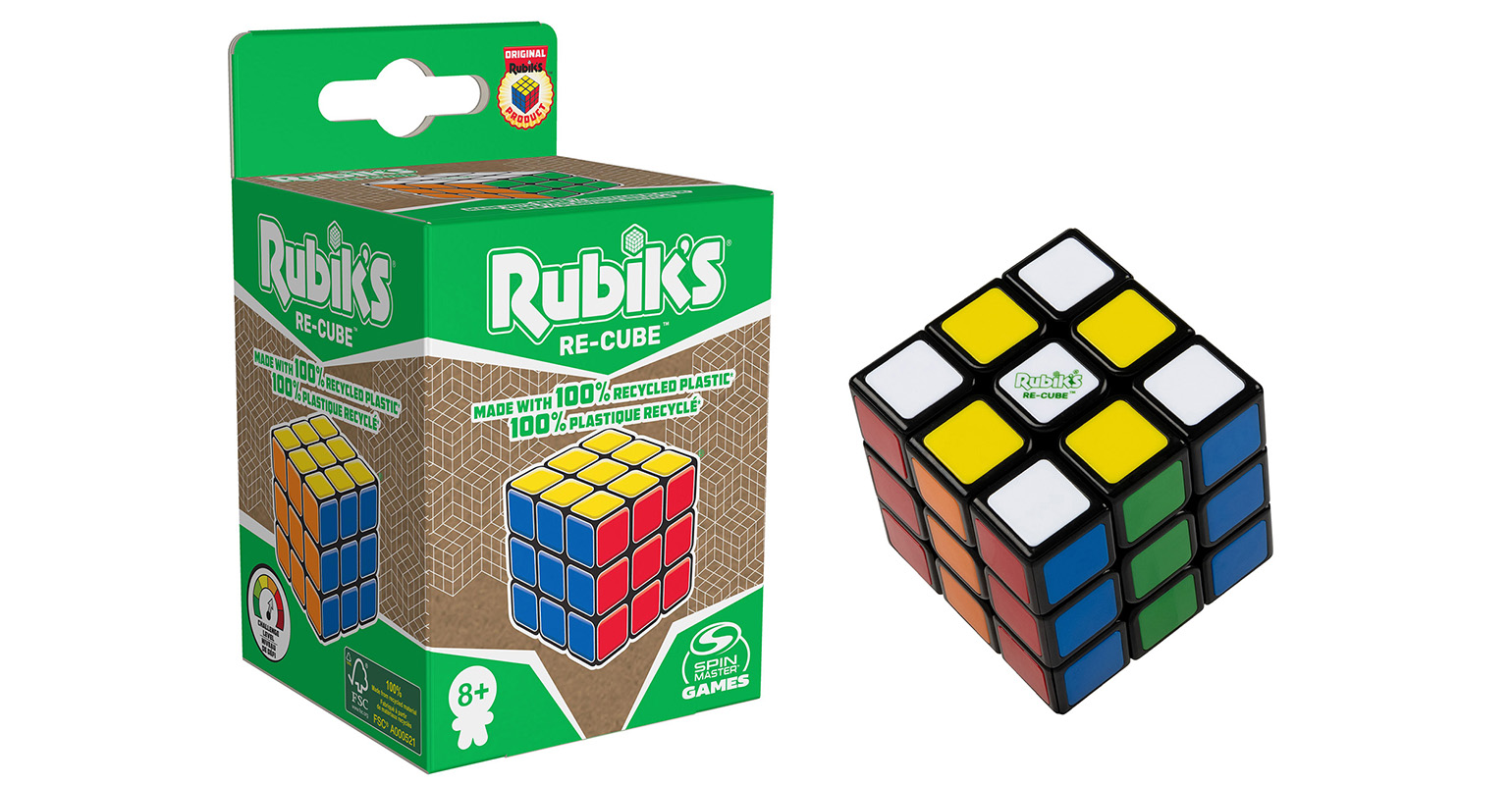
What’s Red, White, and Blue, and Green All Over?

The OG 3×3 Rubik’s Cube, which was invented by a Hungarian architect in 1974 and went on to become a global sensation, has had a makeover. The recently introduced Rubik’s Re-Cube is made with 100% recycled acrylonitrile butadiene styrene (ABS).
The company that currently markets the toy, Spin Master, is committed to sustainability, as articulated in its “Playsponsible” initiative. The company takes a holistic view, encompassing everything from the toy’s environmental footprint to its packaging. In keeping with the Playsponsible mission statement, packaging for the Rubik’s Re-Cube is made from un-bleached paperboard and is FSC certified, ensuring that the materials come from responsibly managed forests. Spin Master has also partnered with TerraCycle to recycle used toys that have exhausted their hand-me-down life cycle.
As green as it gets, the only thing Rubik’s Re-Cube will hurt is your brain as you struggle to solve the maddening puzzle.
You can buy it on Amazon and at various other retail outlets.
It came from behind the Iron Curtain
The Magic Cube, as it was originally dubbed, was invented in 1974 by Ernő Rubik, a young Hungarian architect. His aim was to create a model of three-dimensional movement for his students, writes Hope Reese in “A Brief History of the Rubik’s Cube” published on the Smithsonian Magazine website in September 2020. “His application to the Hungarian Patent Office in 1975 called the cube a ‘spatial logic toy,’” writes Reese. “At the time, Hungary was behind the Iron Curtain — it would remain a communist-controlled Eastern bloc state until 1989 — and as Rubik writes, the country had ‘no particular affinity for toy production.’”
Nevertheless, the cube started to appear on the shelves of Hungarian toy stores in 1977 and made brief forays into international toy shows. At the 1979 Nuremburg Toy Fair in Germany, entrepreneur Thomas Kremer spotted the toy and saw its potential. Living in England at the time, Kremer was born in Romania, and so could communicate with the Hungarians at the stand, none of whom had much idea of how to handle it, according to Kremer’s website.
Kremer shopped it around to numerous toy companies in the West to no avail, until he convinced the Ideal Toy Company, on the brink of bankruptcy, to roll the dice in 1979. By the 1980s, Rubik’s Cube was a global phenomenon. More than 350 million have been sold around the world; far more if you include knockoffs, writes Alexandra Alter in a September 2020 article in the New York Times.
There’s more — much more — to this story. If you want to dig in, a good place to start is Cubed: The Puzzle of Us All, written by Ernő Rubik and published in September 2020.

Leave a Reply